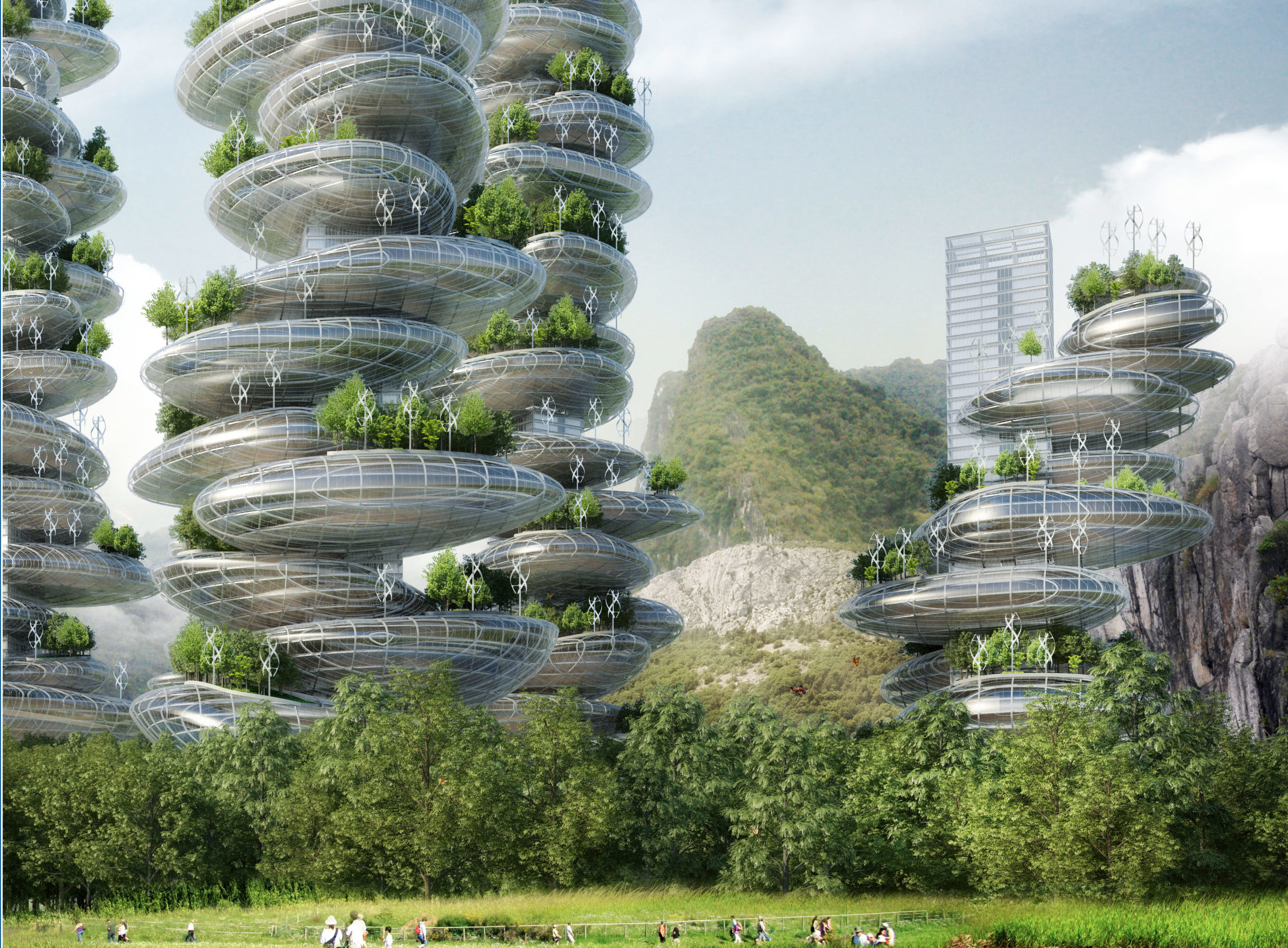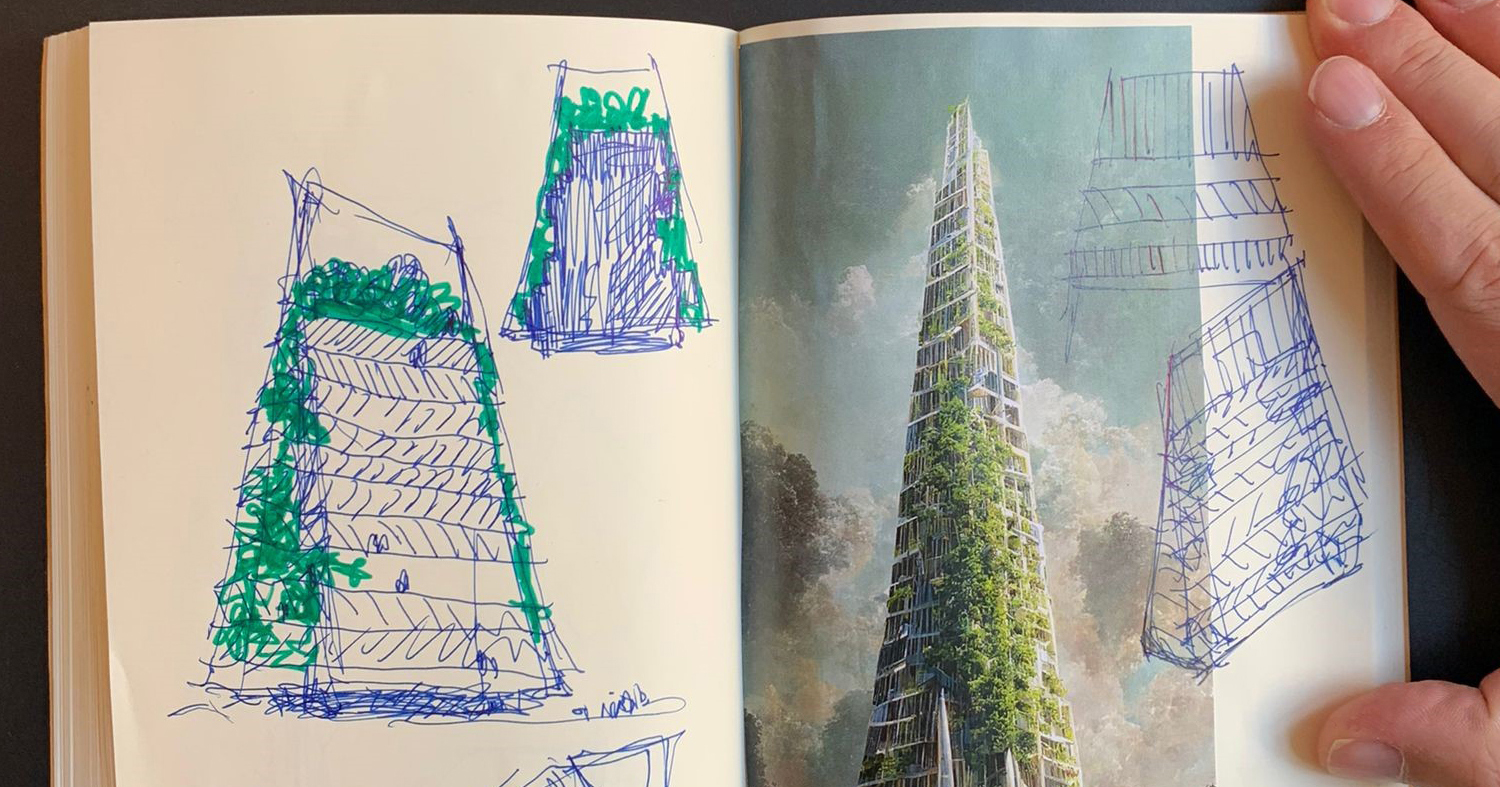Last chance: The 14th Architizer A+Awards celebrates architecture's new era of craft. Apply for publication online and in print by submitting your projects before the Final Entry Deadline on January 30th!
If you’ve spent some time in online architectural forums recently, maybe you’ve stumbled upon images of “Solarpunk architecture.” Generally characterized by grand, swooping biophilic structures replete with vertical forests and solar panels, and in which people live in happy harmony with nature, these renderings evoke a utopian future that might be mistaken for science fiction. But the impressive graphics belie a serious political and social movement intent on taking architecture into a radically greener, more sustainable direction.
Solarpunk architecture fits into the broader Solarpunk movement, which first emerged on Reddit in 2008 as an aesthetic and literary response to Cyberpunk and has grown rapidly in popularity since the mid-2010s. Whereas Cyberpunk has long envisioned a dystopian future rife with urban decay, techno-authoritarian rule and inescapable pollution, Solarpunk sees the future in much more optimistic terms.
Solarpunk visualizes a world detached from capitalist incentives, where humans use high tech and low tech in equal measures as tools for social and economic equality, and urban environments are designed to restore natural ecosystems threatened by climate change. Projects by architects like Vincent Callebaut, a judge for Architizer’s One Rendering Competition, Luc Schuiten and, more recently, by AI-generated images have pushed these ideas into the mainstream, demonstrating the potential Solarpunk has as a legitimate architectural movement.
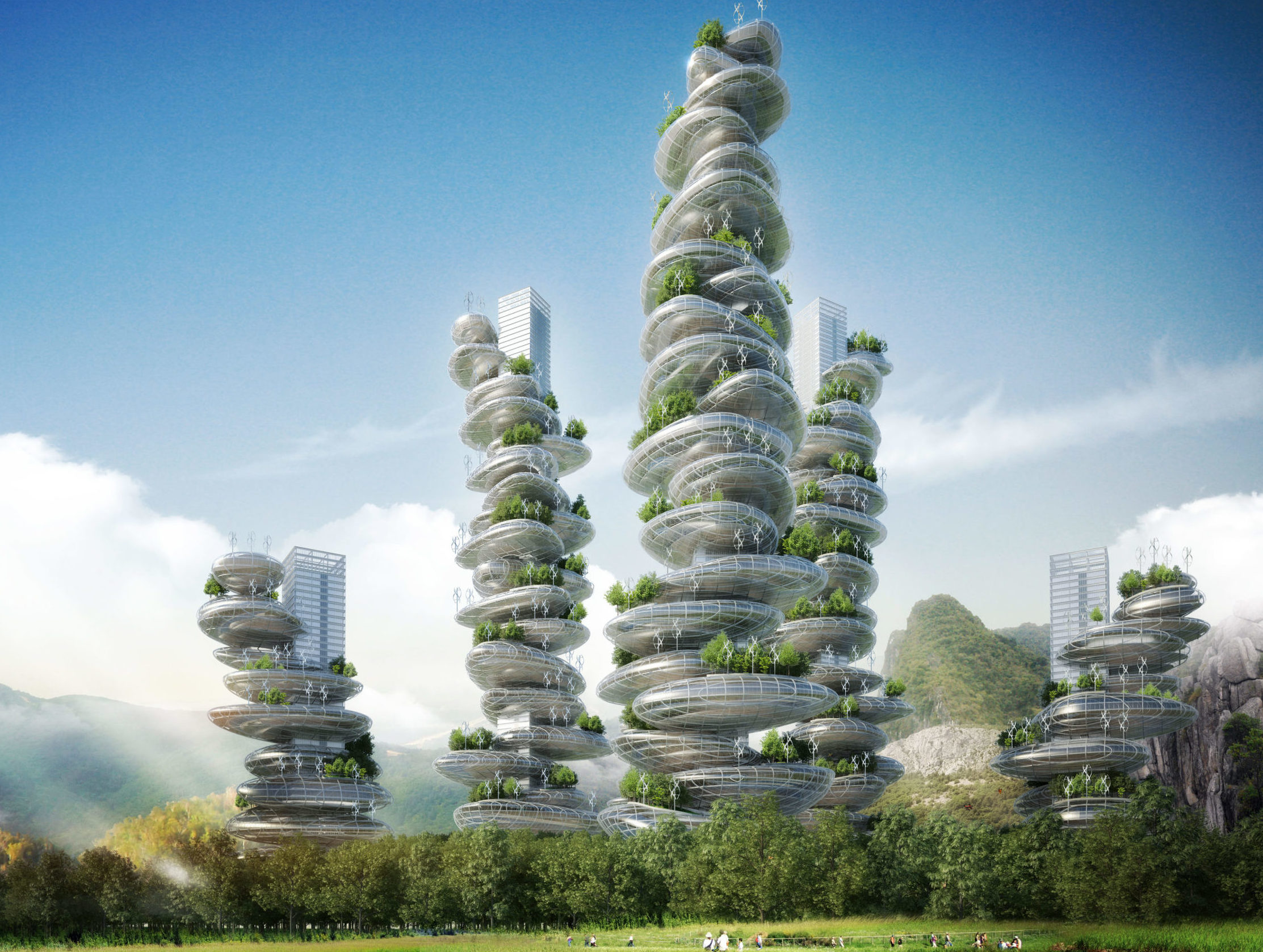
Asian Cairns – Sustainable Farmscrapers for Rural Urbanity by Vincent Callebaut Architectures, Shenzhen, China
The ideas supporting Solarpunk might not be as far-fetched as they seem. Much in the same way that Brutalism was a clean break from architectural tradition, Solarpunk seeks to promote a drastically different approach to the architecture of the 21st century. It argues that the architectural styles of today — the ubiquitous, gleaming, sleek, minimalist towers of steel and glass, for instance — have either failed to address the climactic threats to our planet or have made things worse. Recognizing that our current ways of building are fundamentally an existential threat demands a radical new architectural philosophy, which Solarpunk seems to offer.
It’s difficult to evaluate an architectural movement that exists almost entirely in conceptual terms. At present, the closest thing stylistically to Solarpunk architecture might be Singapore’s Garden City: a political initiative introduced by Lee Kuan Yew in 1967 to transform the dense city into an urban environment brimming with greenery. In recent years, Singaporean architecture has produced dozens of stunning projects evoking the Solarpunk ethos: the Supertree Groves, the Cloud Fountain, the Jewel Changi Airport and the Marina Bay Sands are but a few prominent examples. Such projects regularly make waves on the Solarpunk Reddit to varying degrees of approval, and some Redditors have offered mitigated praise for the city with the slogan: “Singapore minus cars = Solarpunk”.
The data seems to support the ecological benefits of such architecture. Singapore regularly ranks in the top 10 greenest cities in the world. The city has greatly benefitted from the increased presence of nature in the city, reducing urban heat island effect, improving water management and increasing biodiversity, among other things.
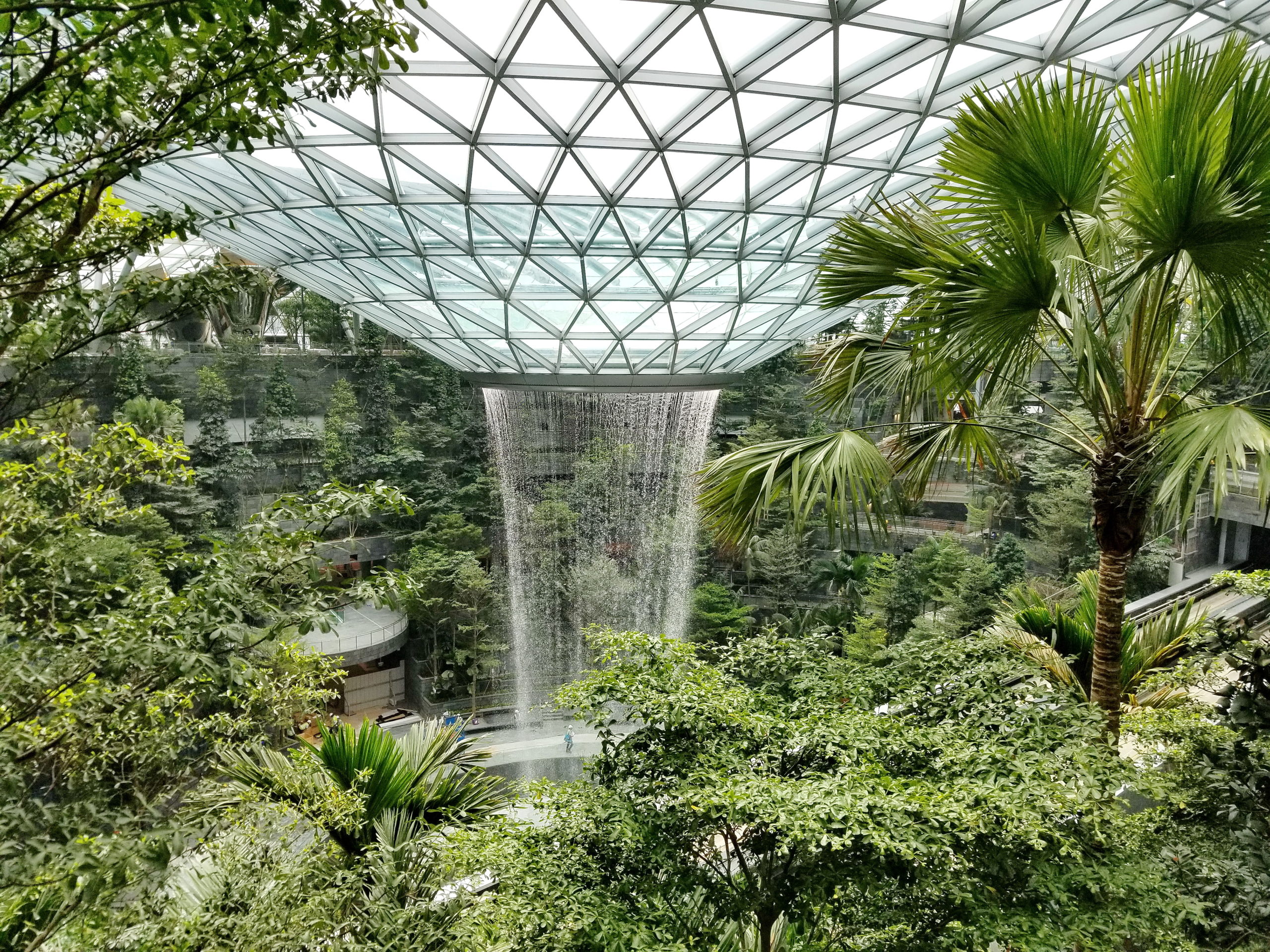
The Jewel Changi Airport by Safdie Architects and PWP Landscape Architecture, Singapore
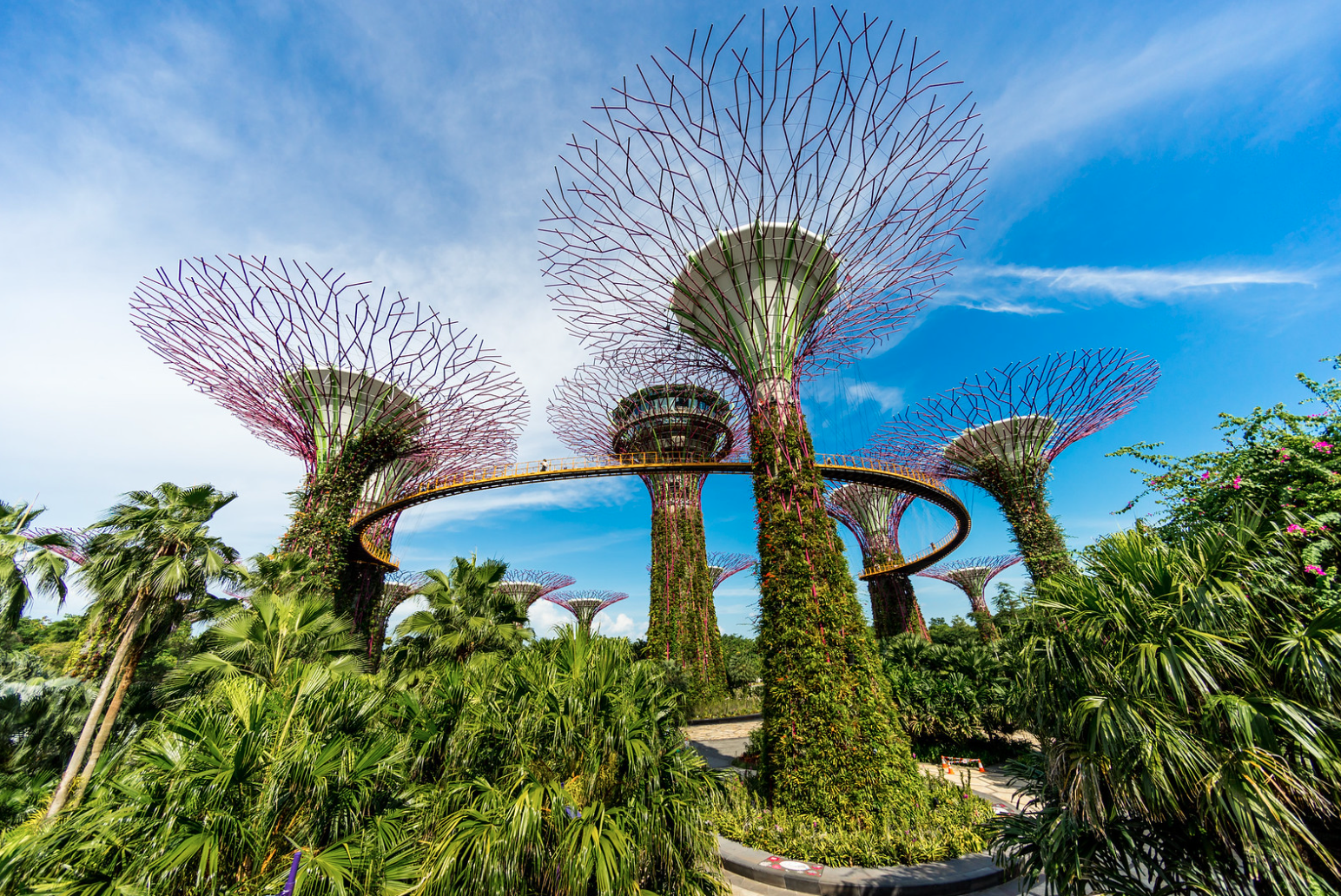
Garden by the Bay by Grant Associates, Singapore; “Supertree Grove – Gardens by the Bay” (CC BY 2.0) by kylehase
Yet it’s not so much the Singapore’s high-rising biophilic green towers or indoor waterfalls replete with lush jungles that contribute to the city’s green credentials. It’s instead the city’s half-century long list of green policies that do most of the heavy lifting. Singapore’s Green Plan 2030, for instance, sets goals like setting aside 50% more land for green spaces and planting one million more trees throughout the city over the next decade. These initiatives are perhaps less visually arresting than designing a vertical jungle on a new skyscraper, but they do much more to bring the city closer to its sustainability goals. As for Singapore’s Solarpunk-like projects, they are more a symbol of the city’s environmental successes than a significant contributor to them.
Therein lies the biggest pitfall of Solarpunk. The movement risks being whittled down to an aesthetic dimension, which in turn will undermine its own ecological philosophy. Solarpunk risks becoming a style without principles; a “green” architecture without green policies. Worse still, the movement could easily be co-opted by developers eager on giving the impression that their projects are environmentally sustainable while they continue to rely to carbon-emitting materials and energy-intensive design principles.
As one Redditor put it more bluntly: “We need more emphasis on the “punk” part of Solarpunk. Next thing you know, some fortune 500 company [sic] will latch on to the Solarpunk theme, and turn it into “SolarPop” or some other greenwashed bullshit.” There is also an irony to the fact that most renderings visualizing Solarpunk architecture could only ever be realistically undertaken by the world’s wealthiest countries and corporations.
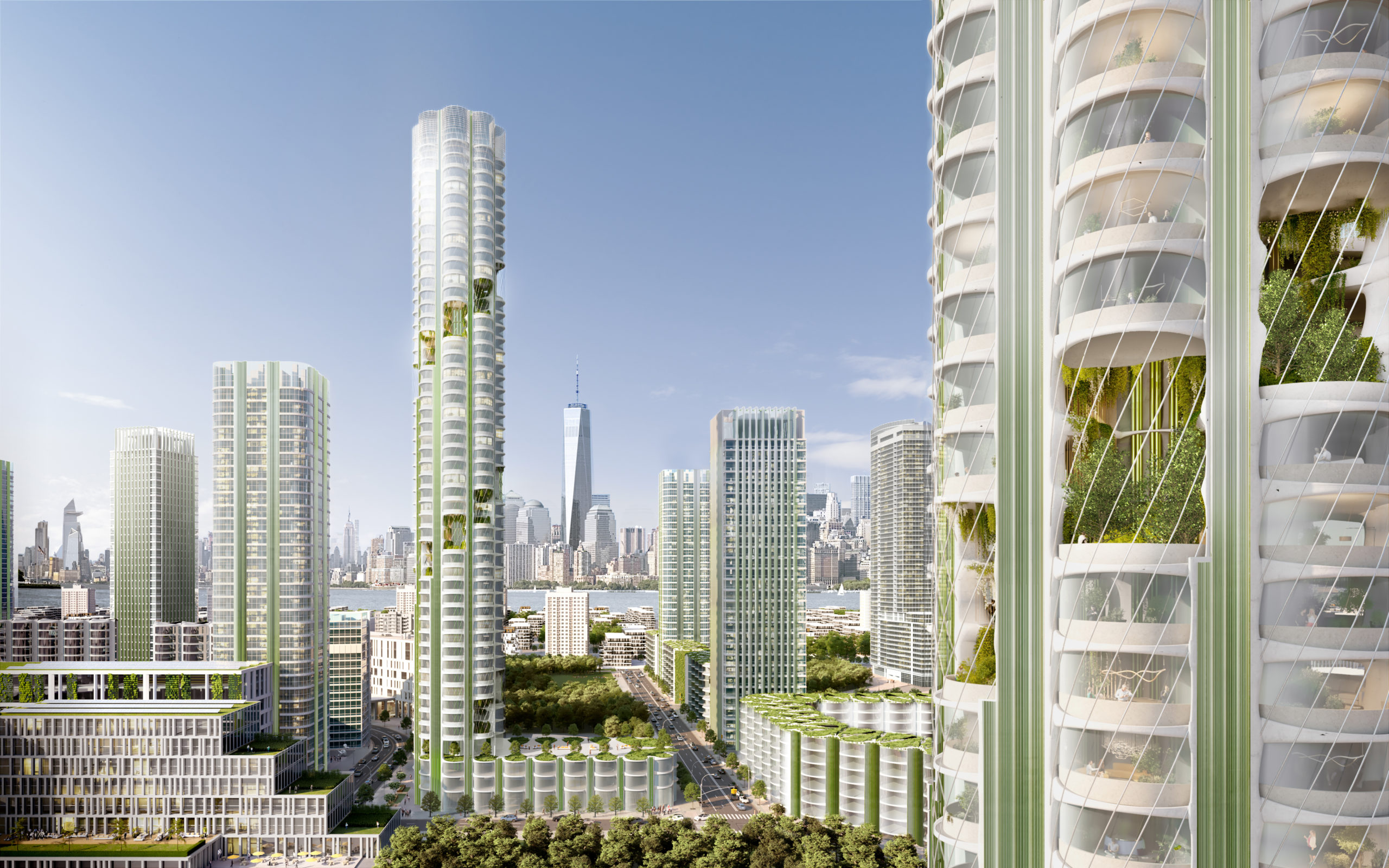
Urban Sequoia by Skidmore, Owings & Merrill (SOM), Concept, — Image courtesy of SOM | Miysis
For Solarpunk to become a viable architectural movement, it must start by relying less on its futuristic visual aesthetic. Though the Solarpunk aesthetic of today is certainly inspiring and evokes an optimistic vision of the future, it can easily turn into a cynical one if the style becomes appropriated by the very capitalistic interests the movement criticizes. Solarpunks should instead put more focus on the grassroots; this includes promoting local environmental policies and incentivizing smaller-scale projects in which individuals — rather than governments or big corporations — can take part. The results should center on the ecological footprint of such initiatives, regardless of whether the final product is pleasing to the eye or looks futuristic.
The movement could also engage with cutting-edge research into green technologies that complement the green-tower-in-the-sky aesthetic. For example, at first glance, renderings of SOM’s Urban Sequoia project appear to be textbook examples of the Solarpunk aesthetic. However, Yasemin Kologlu, architect and sustainable design leader at SOM, has spent years leading research the research that is represented in the renderings. Leveraging existing technologies and emerging solutions, the utopian visions of Urban Sequoia envision an architecture that employs bio materials (made of cyano-bacteria, hydrogel, sand, warm water), nature-based micro algae systems for carbon sequestration and technologies that can transform their buildings into sources of biofuel. (If you’d like to hear more about the project, check out Yasemin’s Future Fest talk, now available as a free recording.) When backed by research, the Solarpunk aesthetic can be an effective tool for raising money and attracting clients to put the nascent technologies into action.
As the movement currently stands, Solarpunk architecture largely exists online; the majority is utopian eye-candy in the same vein as flying cars and space colonies on Mars. It’s a great way to picture what our future could look like, but it offers virtually nothing in terms of present-day solutions (other than being an escapist reprieve from climate change-induced anxieties — and there is something to be said about that). While we can’t expect Solarpunk buildings to sprout up in most cities anytime soon, we need to change the discussion so that when they do, the towers actually deliver on the promises implied by their aesthetic.
Last chance: The 14th Architizer A+Awards celebrates architecture's new era of craft. Apply for publication online and in print by submitting your projects before the Final Entry Deadline on January 30th!
